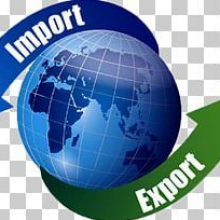Leather is an exceptionally strong, flexible, and durable material sourced from the tanning of animal skins and hides. It serves a multitude of applications in various industries, making it a versatile choice for products such as clothing, footwear, handbags, and furniture. This high-quality material ensures longevity and durability, often lasting for decades when properly cared for. Leather manufacturing involves specialized processes, including preparatory stages, tanning, and crusting, each tailored to enhance the material's strength and aesthetic appeal. The versatility of leather allows for its use in fashion, furniture design, and functionality, making it an essential material in numerous B2B sectors.
Key Features
| Features | Description |
|---|---|
| Material Origin | High-quality animal hides including cattle, sheep, goats, buffalo, pigs, and aquatic animals. |
| Durability | Designed to withstand wear and tear, typically lasting for decades. |
| Versatility | Applicable for a wide range of products such as clothing, handbags, footwear, and home furnishings. |
| Manufacturing Process | Involves preparatory stages, tanning, and crusting for enhanced strength. |
| Aesthetic Appeal | Available in various finishes and textures to meet design requirements. |
| Attributes | Description |
|---|---|
| Types of Leather | Full grain, top grain, split, and corrected grain. |
| Tanning Process | Vegetable tanning, chrome tanning, and synthetic tanning methods. |
| Weight | Varies based on type; averages between 1.5 to 3.5 oz. |
| Thickness | Ranges from 0.5 to 2.5 mm. |
| Texture | Smooth, pebbled, or distressed textures are available. |
Key Words
*Disclaimer: The above description has been AI-generated and has not been audited or verified for accuracy. It is recommended to verify product details independently before making any purchasing decisions.
Country Of Origin: India
Leather is a strong, flexible and durable material obtained from the tanning, or chemical treatment, of animal skins and hides to prevent decay. The most common leathers come from cattle, sheep, goats, equine animals, buffalo, pigs and hogs, and aquatic animals such as seals and alligators.Leather can be used to make a variety of items, including clothing, footwear, handbags, furniture, tools and sports equipment, and lasts for decades.The leather manufacturing process is divided into three fundamental subprocesses: preparatory stages, tanning, and crusting. A further subprocess, finishing, can be added into the leather process sequence, but not all leathers receive finishing.






Solapur, India
Professional Services, Contractor, Retailer, Distributor, Exporter, Importer, Wholesaler, Startup